The Service Maturity Report page provides a global view of how all your teams/services are performing against the rubric. You will be able to answer questions like:
- Which teams are performing the best/worst?
- How are services doing in the Security category?
- Which of our Tier 1 services at the most at risk?
To view the Services Maturity Report, click the Service Maturity menu under the Reports menu.
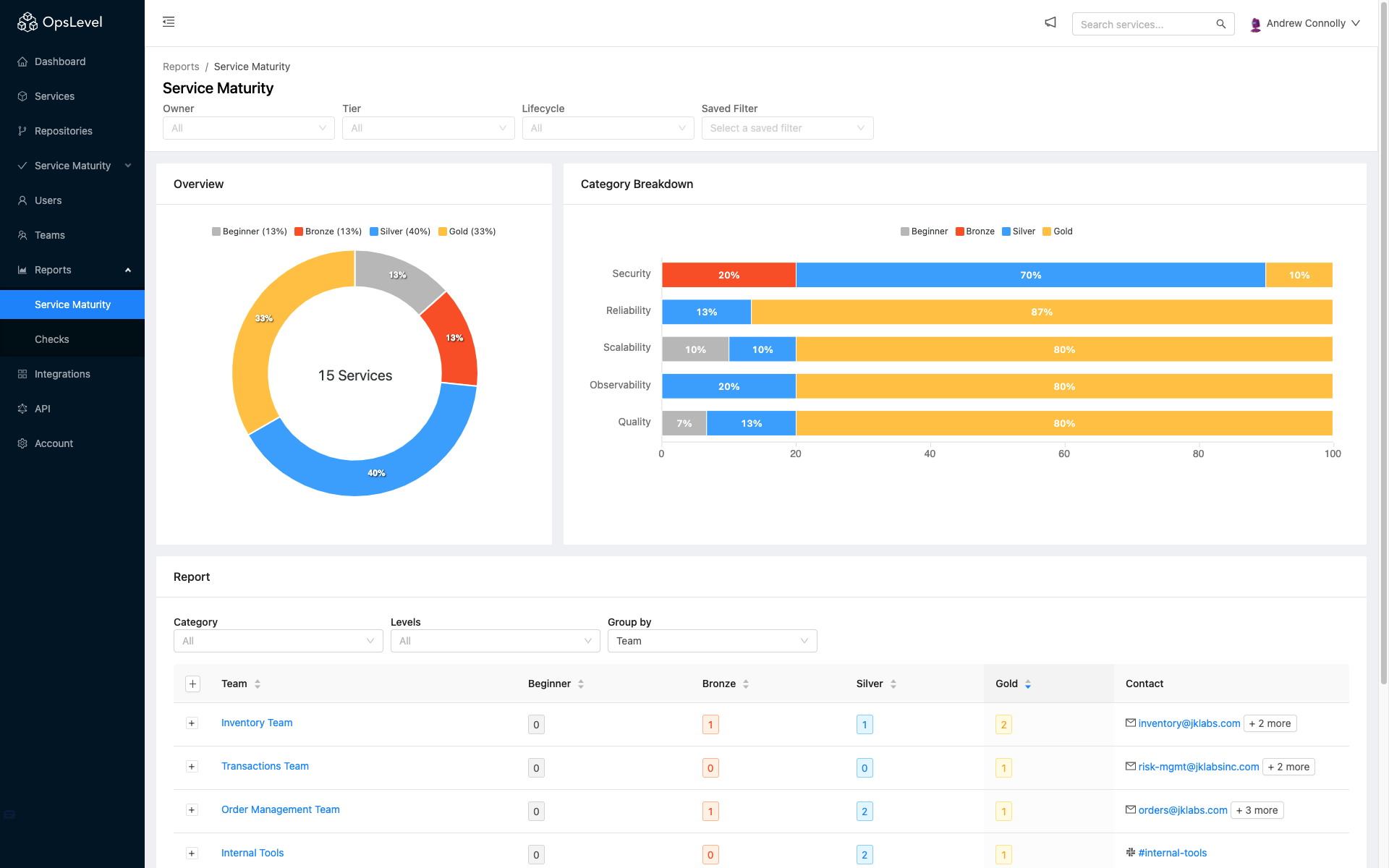
Charts
The Overview chart shows how many services are in each level. Hovering over a section will display the number of services in that level.
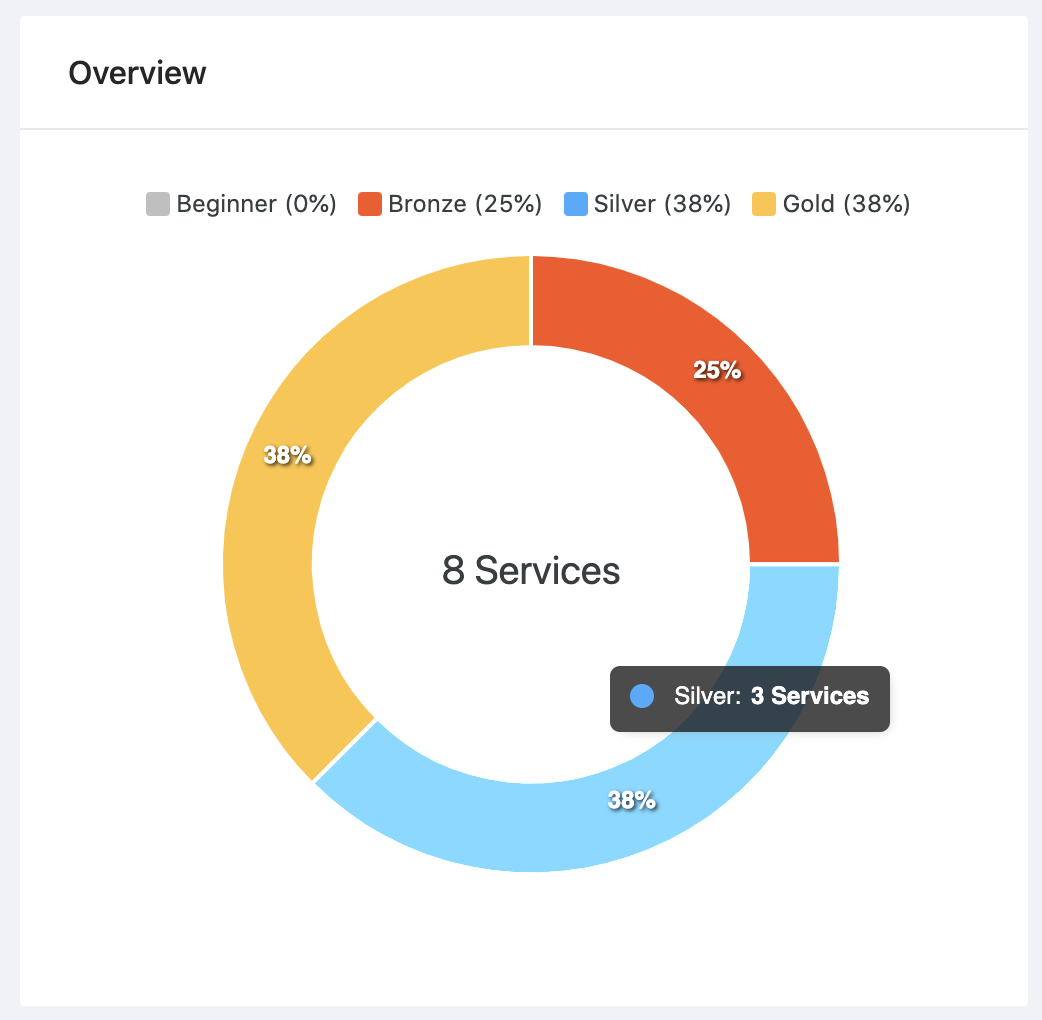
The Category Breakdown chart groups the services by category and shows how many services are in each level. It can be used to identify how services are performing in each category.
In this example, services are doing great in the Quality category with 88% of services being in the Gold level, and performing poorly in the Security category with 40% in the Bronze level. Hovering over a section will show the number of services in a certain level and category.

Report
The Report section groups services by team which allows you to see how each team is performing against the rubric. The counters display how many services owned by that team are in each level.

In this example, the Inventory Team is doing well - it has 0 services in Beginner and 2 in Gold. The Warehouse team on the other hand is doing poorly - it has 1 service in Beginner and 0 in Gold.
Clicking on the + icon beside a team’s name will show how that team’s services are performing against the rubric. The Level column displays the service’s current level. Clicking on the service’s level will take you the Maturity Report tab where you can learn more about why that service was assigned a certain level.
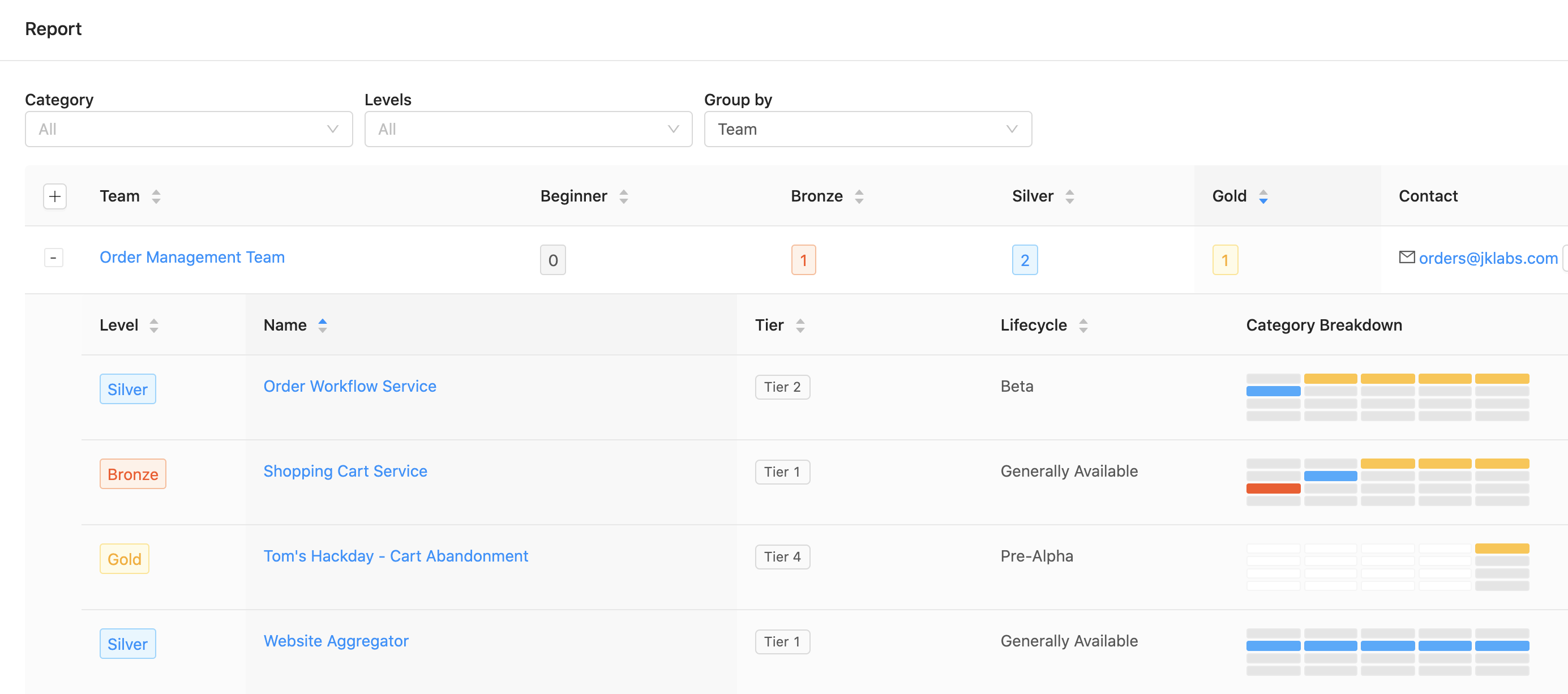
The last column entitled Category Breakdown shows how a service is performing against the different categories. The categories are shown as columns and the levels are shown as rows.
You can figure out at a glance why a service has a certain level. For example, the Order Workflow Service has a level of Silver in the Security category which is bringing down its overall level to Silver. Once the service achieves Gold in Security, its overall level will also move up to Gold.
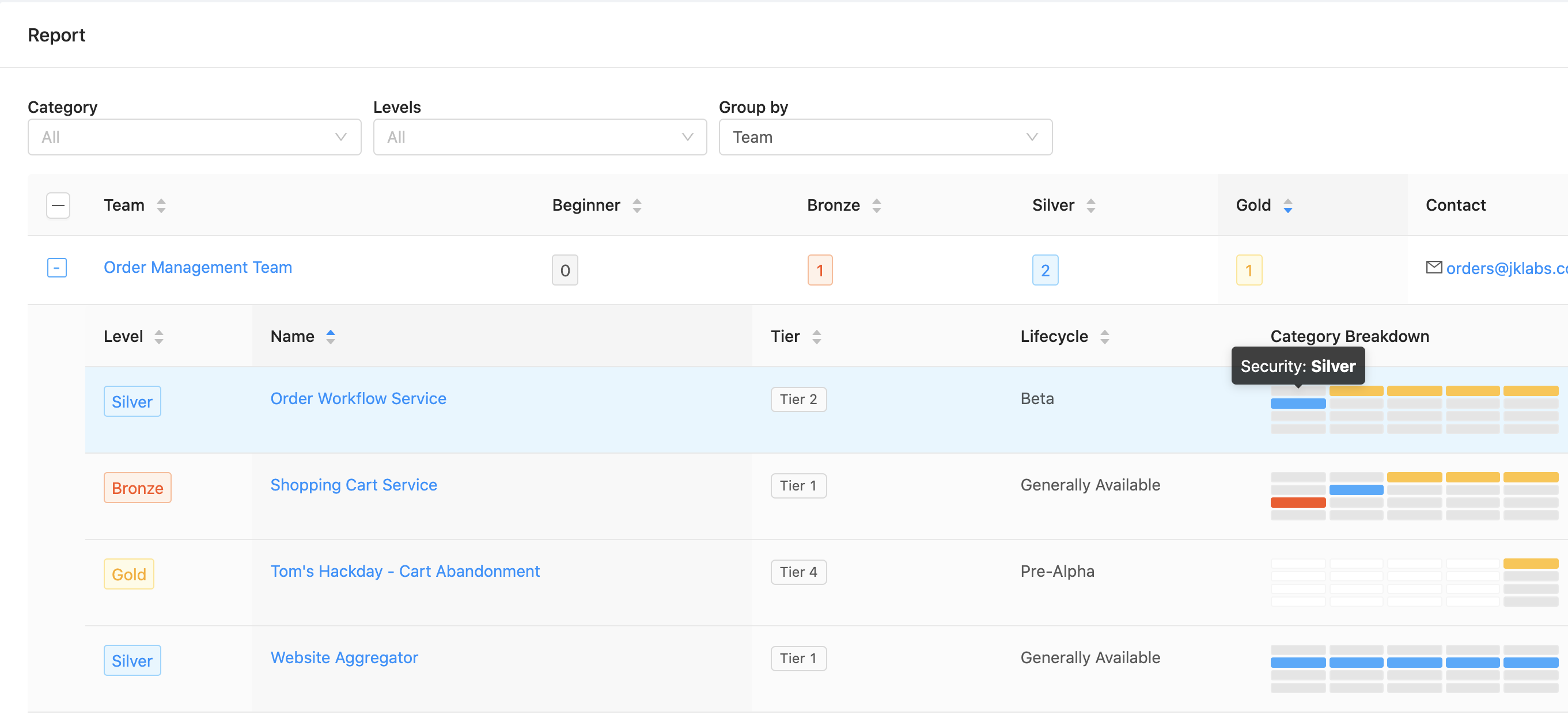
White cells in the Category Breakdown indicate that a service doesn’t have a level for that category. Hovering over the cell will show a level of “N/A”. This can happen if all the checks for a category are using filters that don’t apply to the service. You can read the Checks and Filters docs for more info about filters.
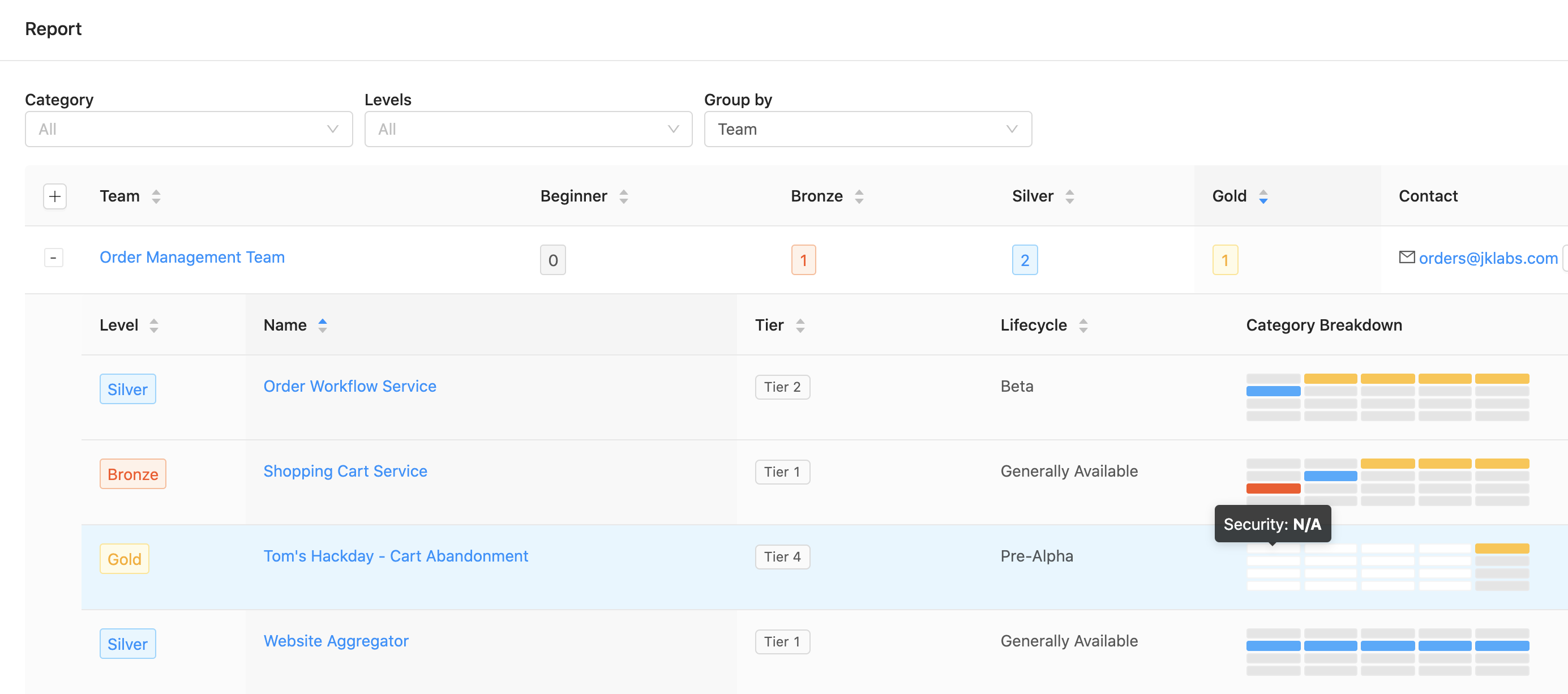
If you’re less concerned about teams and just want to get a general idea about how your services are performing, you can select Service in the Group By dropdown. This will display a list of all your services and show their Level and Category Breakdown.

Filters
You can select different filters at the top of the page. For example, you can use the Owner filter to select all your team’s services. These filters will affect both the Charts and the Report.

When multiple options are selected within a filter, OpsLevel will return services matching any of those options. For example, selecting two teams in the Owner filter will return services owned by either of those two teams.
When different filters are combined, OpsLevel will return services matching all of those filters. For example, selecting Inventory Team in the Owner filter and Tier 1 in the Tier filter will return Tier 1 services that are owned by the Inventory Team.
The last filter entitled Saved Filter lets you select existing filters that have already been defined on your rubric. These advanced filters let you filter by additional service properties and they let you combine multiple filter conditions. For example, you could use a Saved Filter to find all Tier 1 services written in Javascript. The Checks and Filters docs have more info about these advanced rubric filters.
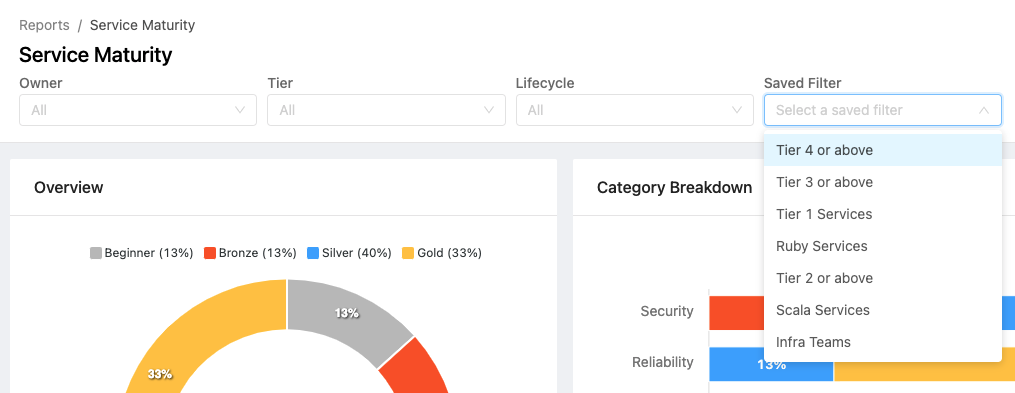
The filters that are selected will be stored in the url which allow you to easily share different views of the report.
Report Filters
The Report section has additional filters that can be selected. These filters only apply to the Report, they don’t apply to the Charts. For simplicity, the examples below will use these filters when grouping by service but the filters also work when grouping by team.

The Level filter can be used to view services that have a certain level. It’s a great way to quickly identify the best/worst performing services in your organization. If more than one level is selected, it will show services containing any of those levels.

The Category filter can be used to view how services are performing against a specific category. When this filter is selected, the level displayed for each service will be the service’s level for that specific category. Services that don’t have a level for that category will be filtered out.

When the Category filter is combined with the Level filter, it will show services with a certain level for the selected category. For example, you can use these filters to find the services with a level of Bronze in the Security category.

Similar to the other filters at the top of the page, these report filters will be stored in the URL to allow you to easily share different views of the report.
